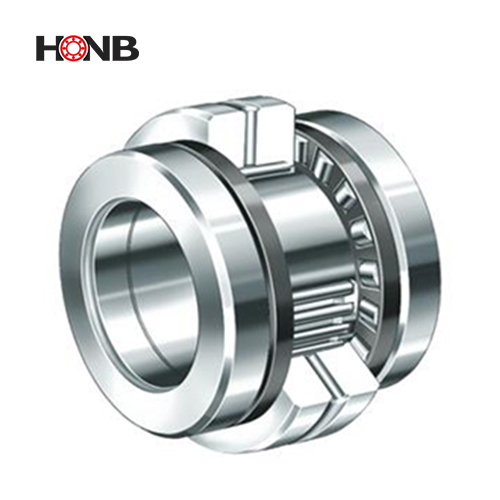Product FAQ
What problems should be paid attention to when selecting bearings
"Various types of bearings have different characteristics due to different designs. Due to the variability and complexity of the specific installation position of the bearing and the application, there is no fixed pattern for the selection of bearing types to adapt to a specific installation position of a certain host. When selecting a bearing type based on application conditions and application conditions, it is recommended to consider the following main factors.”
allowed space
In mechanical design, the size of the shaft is generally determined first, and then the bearing is selected according to the size of the shaft. Usually, small shafts use ball bearings; large shafts use cylindrical roller bearings, spherical roller bearings, tapered roller bearings (sometimes ball bearings can also be used). If the radial space of the bearing installation part is limited, a bearing with a smaller radial section height should be used. Such as needle roller bearings, certain series of deep groove ball bearings, angular contact ball bearings, cylindrical or spherical roller bearings, and thin-walled bearings. If the axial space of the bearing installation part is limited, a bearing with a smaller width dimension can be used.
bearing load
Load magnitude The magnitude of the load is usually the determining factor in the selection of bearing size. Roller bearings have a higher load carrying capacity than ball bearings of the same frame size. Usually ball bearings are suitable for light or medium loads, and roller bearings are suitable for heavy loads.
For pure radial load, deep groove ball bearings and cylindrical roller bearings can be used. For pure axial loads, thrust ball bearings and thrust cylindrical roller bearings can be used. When there is radial load and axial load (combined load), angular contact ball bearings or tapered roller bearings are generally used. If the radial load is large and the axial load is small, the bearings are professional on WeChat! Deep groove ball bearings and cylindrical roller bearings with ribs on the inner and outer rings can be selected. If there are large deformation of the shaft or shell and poor installation alignment, self-aligning ball bearings and self-aligning roller bearings can be selected. If the axial load is large and the radial load is small, thrust angular contact ball bearings can be used. If the four-point contact ball bearings also require self-aligning performance, thrust self-aligning roller bearings can be used.

Rotating speed
The operating speed of rolling bearings mainly depends on its allowable operating temperature. Bearings with low frictional resistance and less internal heat generation are suitable for high-speed operation. When only bearing radial loads, deep groove ball bearings and cylindrical roller bearings can be used to achieve higher speeds. When bearing combined loads, angular contact ball bearings should be used. Using specially designed high-precision angular contact ball bearings, it can reach extremely high speeds. The rotational speed of all kinds of thrust bearings is lower than that of radial bearings.
Rotation accuracy
For most machinery, the selection of bearings with a tolerance of 0 is sufficient to meet the requirements of the main engine, but when there are strict requirements on the rotation accuracy of the shaft, such as machine tool spindles, precision machinery and instruments, etc., deep groove ball bearings with higher tolerance levels should be selected. Angular contact ball bearings, tapered roller bearings, cylindrical roller bearings and thrust angular contact ball bearings.
rigidity
The rigidity of a rolling bearing is determined by the amount of elastic deformation that occurs when it bears a load. In general, this deformation is small and can be ignored, but in some machinery, such as the spindle system of a machine tool, the static stiffness and dynamic stiffness of the bearing It has a great influence on the characteristics of the system. Bearing people WeChat professional! In general, roller bearings have higher stiffness than ball bearings. Various types of bearings can also improve rigidity to varying degrees through proper "preload".
Noise and Vibration
The noise and vibration of the bearing itself are generally very low. However, for small and medium-sized motors, office machinery, household appliances, and instruments that have special requirements for noise and smooth operation, low-noise bearings are usually used.
axial movement
The most common arrangement of bearings is to install a set of axially positioned "same fixed bearings" at one end of the shaft, and a set of axially movable "swimming bearings" at the other end to prevent the shaft from being damaged due to thermal expansion and contraction. A stuck phenomenon occurs. The commonly used "swimming bearing" is a cylindrical roller bearing with no ribs in the inner ring or outer ring. At this time, the fit between the inner ring and the shaft or the fit between the outer ring and the housing hole can be an interference fit. Sometimes non-separable deep groove ball bearings or self-aligning roller bearings can also be used as floating bearings, but when installing, the inner ring and the shaft or the outer ring and the shell hole should choose a clearance fit to ensure that the inner ring or outer ring has Sufficient freedom of axial movement.
Categories
News
Contact Us
Contact: YRT Rotary Table Bearing|Crossed Roller Bearing|Luoyang Hongyuan Bearing 【HONB】
Phone: 13653797636
Tel: 400-037-9586
E-mail: lyhyzc7@gmail.com
Add: Chuangye road, Konggang Industrial cluster district,Luoyang city, Henan province, China